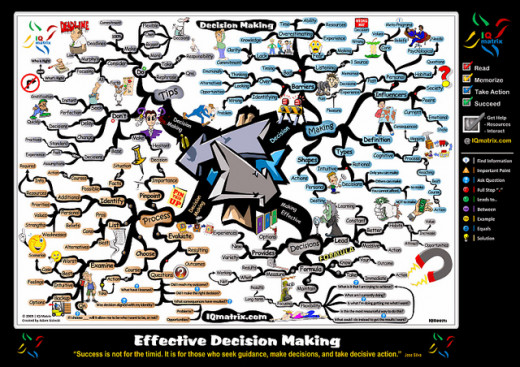Effective Decision-Making in Analyzing Educational Organizations

Quick Poll
What interested you in this article?
According to Peter Drucker (2006), effective decision-making is all about time.
No decision should be made without being well thought out and given plenty of time to brew.
Anytime there is a decision that must be made, especially if it will impact more than one person, should be given plenty of time.
Time
Sleep on it and give it a few days. Typically the moment that the topic stops being considered, is usually the exact time that the answer, or at least a few possible solutions, come to mind.
There is no big decision that is necessary to be made in a moment’s notice and no big decision should be made in one. Decisions made in crunched time frames, or in stressful moments, tend to be bad ones. Drucker (2006) suggests all possible solutions must be considered and all outcomes weighed. This is the only way that all sides can truly be considered and a good decision made.
In fact, giving enough time to consider all of the possibilities typically reveals sides of the argument you never would have considered before and the right decision usually lays itself out nicely for you. The biggest point that really struck home with me regarding decisions, was that which the author pointed out about the understanding that comes from the clash of conflicting views. “The first rule in decision-making is that one does not make a decision unless there is disagreement” (p. 148).

Disagreement
Disagreement usually brings to light alternative viewpoints that may not have been obvious without it. People that do not agree will consider every side and every argument that defends their position, even if it's not proven or not reasonable.
With just one person trying to create a pros and cons or advantages and disadvantages list, it is difficult to truly consider every side and every reason for each side.
The saying two is better than one has good support behind it. Two, especially two arguing can expose reasoning that may enlighten everyone to truths and reasoning that would sway the other.
Some of the best decisions have been made this way.
Two Rules for Analyzing Decisions
In reference to decision-making as part of analyzing educational organizations, Owens and Valesky (2011) both discuss rules for identifying decisions in which it is appropriate for teachers to participate.
Seeing as how the majority of decision comes from the top administration and are simply filtered down to those of us at the bottom, it is important and even critical to know when it is time for teachers to be actively involved in the decision-making process.
Some of the big decisions regarding the school district, school politics, rezoning, etc. simply aren't appropriate for teachers to participate in, so it's important to know what decisions teachers should be in and how they should get involved.

Relevance
The first rule Owens and Valesky (2011) site is the test of relevance, which asks “Is there a personal stake in the decision?” If the decision being made will affect them personally, they should be involved.
Some of these decisions might include the addition of another fine arts class, a change in the schedule for teachers, a school-wide project involving all subjects, or even the introduction of a new writing program.
Unfortunately, many decisions that directly involve teachers are never consulted on with teachers. A change in the science program, in the requirements to get to the next grade level, in the objectives teachers are required to reach each school year, etc.
Test of Expertise
The second rule is the test of expertise which states that a person must be competent to contribute effectively. I love this rule!
To me this means that the highly effective teachers that have proven their competence through evaluations should be participating in this decision for the best outcome.
To include those that are incompetent and cannot even take care of their own classrooms would overwhelm those teachers and distract from the purpose of the decision.
Finally, the test of jurisdiction states that the individual school and staff must have jurisdiction only over those decision-making areas that are assigned to them (2011). If those decision makers have no stake in the decision, it does not personally affect them and they cannot do anything to put the plan into action once the decision is made, the wrong people are making the decision.
References
Drucker, P. (2006). The effective executive: The definitive guide to getting the right things done. New York, NY: HarperCollins Publishers.
Owens, R. & Valesky, T. (2011). Organization behavior in education: Leadership and school reform (Tenth edition). Upper Saddle River, NJ: Pearson Education Inc.
Quick Poll
What did you think of this essay? What it helpful to you?
© 2013 Victoria Van Ness







